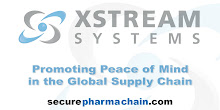 The recent heparin recalls have left consumers fuming and pointing fingers at those who were supposedly protecting them from harm. With a difficult past year in both tainted food and medical products – this was the last straw.
The recent heparin recalls have left consumers fuming and pointing fingers at those who were supposedly protecting them from harm. With a difficult past year in both tainted food and medical products – this was the last straw.But in reality, most in the industry knew the FDA was woefully understaffed and unequipped to cope with the expansion of global inspections required to guarantee the safety of our food and drug supply. Finally this week in answer to Pennsylvania Senator Arlen Spector’s request, FDA commission Andrew C. von Eschenbach asked congress for $275 million as an immediate budget submission. Increased funds will be use to increase inspections, modernize their science and staff, and upgrade their laboratory facilities.
Julie Zawisza, an F.D.A. spokeswoman said “These resources will accelerate the changes required for F.D.A. to protect and promote the health of all Americans in a rapidly changing world that poses new, emerging threats to the safety of food and medical product.”
One might asked, how could we let it get to this point? How indeed! The pharmaceutical industry has a history of relying of reactive testing, specific to the particular contaminant or variance they are guarding against. However, modern day protection requires a more proactive approach – a verification of the whole and an assurance against those criminal minds that can fool testing with traces of authentic material mixed in with the altered substance.
To further this point, we must have testing down the chain as well. As the saying goes, “Test Often, and Test Late!” The closer to consumer that authenticity testing is done, the more you are sure the consumer is receiving the “True Goods”. Too often each company points to the other on whose responsibility it is too safeguard the product.
Now it is the consumer who is doing the pointing and he or she is pointing at us all!








